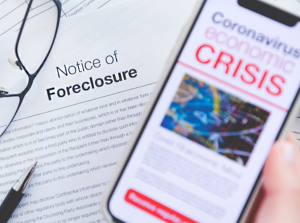
With California’s commercial financing disclosure laws becoming effective on Dec. 9, Andrew K. Alper of Frandzel Robins Bloom & Csato provides an updated and detailed guide to the new regulations.
Since September 2018, when Assembly Bill 375, otherwise known as the California Consumer Privacy Act of 2018, was enacted in California, commercial finance has contended with consumer-like disclosures required for certain commercial transactions required with respect to lending transactions in California. Other states, including New York and Utah, have followed California’s lead with respect to commercial finance disclosure laws, but the laws passed in New York and Utah are not yet effective as of the date of this article, while other states have only introduced bills for similar types of disclosure requirements in commercial transactions.
California’s disclosure law is codified in Financial Code §§22800 (the statutes). However, the law passed was only the framework for the disclosure requirements and the statutes tasked the California Department of Financial Protection and Innovation (DFPI), which regulates lending in California, to create the regulations which would implement the law. Since 2018, the DFPI has created the regulations for the statutes, but it requested multiple comment periods, and various lenders, law firms, trade associations and other groups submitted comments and requested changes.

By Andrew K. Alper
Vice President and Shareholder at Frandzel Robins Bloom & Csato, L.C.

California’s recently enacted foreclosure reform laws promulgated under SB-1079 (the “Bill”) received much attention when it went into effect at the beginning of the year amid economic uncertainty stemming from the COVID-19 pandemic with many bracing for the possibility of future widespread foreclosures once moratoriums lifted and other pandemic forbearance protection programs ended. Given the federal moratorium on foreclosures recently ended on July 31, 2021 and many pandemic forbearance plans will remain in effect only until the end of September, it remains to be seen how significant foreclosure activity will increase due to the pandemic.
Codified in Civil Code section 2924m(c)(2), the Bill modifies the non-judicial foreclosure auction bidding process by most notably affording what is essentially a right of first refusal to tenants, prospective owner-occupants, and community non-profits (such as housing trusts), among other statutorily defined “eligible bidders”, allowing them to purchase a one to four unit single-family residence after foreclosure by either matching or beating the winning bid. Eligible bidders are given a total of 45 days after the foreclosure sale by which to provide the trustee a bid before the sale will be deemed final so long as the trustee received a notice of intent to bid within the first 15 days following the foreclosure sale. Post foreclosure sale (provided the winning bid was not made by a prospective owner-occupant), eligible tenant bidders only need to bid an amount equal to the last and highest bid at the foreclosure sale, while in the case of all other types of “eligible bidders”, the bid only needs to exceed the last and highest bid. The Bill also prohibits the bundling of properties for sale to a single buyer through foreclosure (unless the deed of trust requires otherwise), creates new foreclosure procedural requirements, and increases civil fines imposed against owners that fail to maintain properties purchased at foreclosure.
The Bill was a response to California’s affordability crisis and issues seen during the many foreclosures that occurred during 2007-2010 when California experienced significant declines in owner-occupied housing, cited in large part to be a result of the entry of institutional investors in the rental market. The first test of the Bill since enactment made headlines at the end of April, 2021 when a bay area tenant beat the winning foreclosure bid by partnering with a community land trust. Partnership with a land trust involves entering into an agreement with the trust with an agreement to sell the property to the next owner at an affordable price subject to the land trust agreement. Though not yet clear what impact the Bill will have on California’s affordability crisis, if this first test is any indication, it may well lead to more property ownership being subject to similar covenants if community land trust partnerships are widely utilized to take advantage of the new post foreclosure bidding process.
It is important for lenders bidding on their own collateral in foreclosure to not only have an understanding of the new obligations and procedures implemented by the Bill (which includes, among other things, the requirement that foreclosing lenders send foreclosure language to all current tenants outlining their right under a trustee’s sale), but also an understanding of how the new rules will affect their bidding strategy at foreclosure. Up to this point, a lender’s bidding strategy at a foreclosure auction of its own collateral already posed the need for a careful calculation to determine the bid amount, while, of course, staying far away from the dreaded full credit bid. Now that winning bids may be beaten post-foreclosure, Lenders will need to reevaluate their strategy and be even more careful when determining their bid at auction.

By Geoffrey M. Olin
Associate at Frandzel Robins Bloom & Csato, L.C.

AB 1482 Explained
In early September, 2019, the California legislature passed AB 1482, which would enact a statewide rent-control law and other eviction protections for renters. AB 1482 is part of the State’s efforts to reduce the cost of housing and protect California renters who have been adversely affected by rising rents and gentrification. The law is expected to be signed by Governor Newsom before the end of October, and the law will go into effect on January 1, 2020 and expire in 2030, unless extended by lawmakers.
What does AB 1482 do?
As currently contemplated, AB 1482 will institute state-wide rent control where landlords will be restricted from raising rents by more than 5 percent per year plus the local rate of inflation, with 10 percent being the maximum amount of the increase.
In addition to the rent control provisions, AB 1482 will also require that landlords show “just cause,” such as a failure to pay rent or some other default under the lease, before evicting tenants from a unit that such tenant has resided in for over one year. Moreover, landlords must provide the tenant an opportunity to “cure” the missed payment or default. If a landlord wants to evict a tenant without the aforementioned “just cause,” such as to convert a rental property to condominiums or make other renovations, the landlord will have to pay the evicted tenant a relocation assistance of one month’s rent.
AB 1482 only applies to units that are (i) not already covered by a rent control ordinance, and (ii) greater than 15 years old, which will get adjusted with every passing year (eg: units built in 2006 would be covered in 2021, units built in 2007 would be covered in 2022, and so on). For example, in a city like Los Angeles where the local rent control ordinance only applies to buildings constructed before 1978, as of January 1, 2020, rental units built from 1978 to 2005 would be covered by AB 1482. Moreover, single family home rentals are exempt unless such rentals are owned by an institutional investor.
How will AB 1482 affect the housing market?
According to a study by UC Berkeley’s Terner Center for Housing Innovation, which studied 10 communities throughout the state – Chula Vista, Fresno, Long Beach, Los Angeles, Oakland, San Francisco, San Rafael, Stockton, Vallejo, and West Sacramento – found that a majority of the rent increases over the last several years would have been permitted under AB 1482. However, the study did note several communities, such as Fruitvale/West Oakland, the Mission in San Francisco, and Boyle Heights in Los Angeles, that had exorbitant rent hikes over the period studied. Existing tenants in those areas would have been substantially benefited by the law, with an estimated 32 percent of the units in such areas being covered by the law.
Economists generally view rent control laws as having a detrimental affect on the cost of housing over the long term. While California suffers from an acute shortage of housing, there is little evidence that rent control laws actually increase the supply or affordability of housing. In fact, the opposite may be true – rent control laws deter the supply of new housing as the construction for new homes becomes less profitable. Moreover, landlords are often discouraged from investing in their existing properties as they see less return on their investment, and renters stay put as the disparity between their controlled rent and the market increases over time. These factors create distortions in the housing market.
While economists point to the construction of new units as the primary solution to the shortage of housing in California, such construction is unlikely to happen fast enough to address the current crisis in the State. Accordingly, as recognized by the Berkeley Haas Institute for a Fair and Inclusive Society, rent control is the only way for government to enact immediate solutions to respond to the housing crisis.

By Wesley King
Associate at Frandzel Robins Bloom & Csato, L.C.





